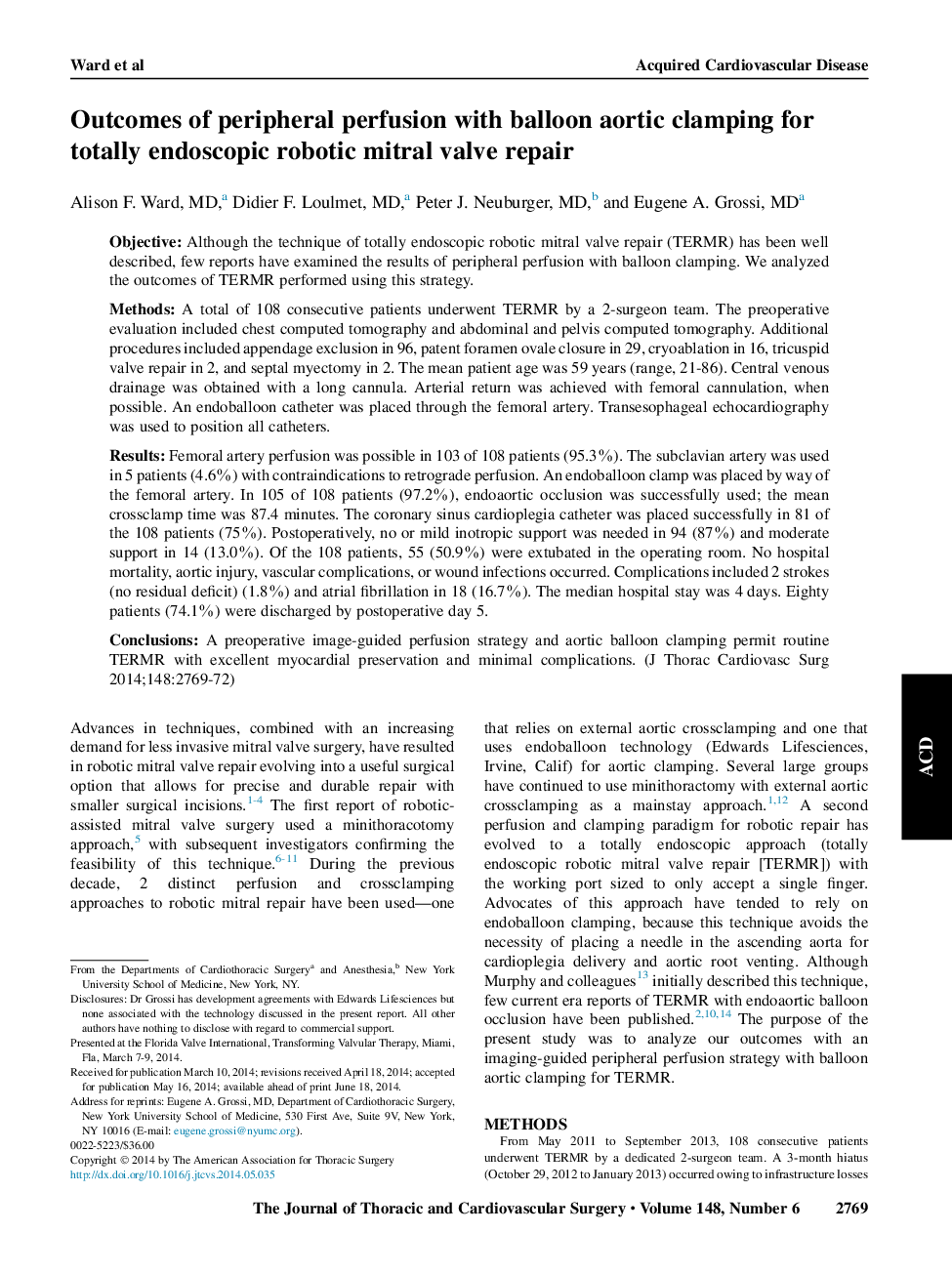| کد مقاله | کد نشریه | سال انتشار | مقاله انگلیسی | نسخه تمام متن |
|---|---|---|---|---|
| 5989851 | 1578604 | 2014 | 4 صفحه PDF | دانلود رایگان |
ObjectiveAlthough the technique of totally endoscopic robotic mitral valve repair (TERMR) has been well described, few reports have examined the results of peripheral perfusion with balloon clamping. We analyzed the outcomes of TERMR performed using this strategy.MethodsA total of 108 consecutive patients underwent TERMR by a 2-surgeon team. The preoperative evaluation included chest computed tomography and abdominal and pelvis computed tomography. Additional procedures included appendage exclusion in 96, patent foramen ovale closure in 29, cryoablation in 16, tricuspid valve repair in 2, and septal myectomy in 2. The mean patient age was 59 years (range, 21-86). Central venous drainage was obtained with a long cannula. Arterial return was achieved with femoral cannulation, when possible. An endoballoon catheter was placed through the femoral artery. Transesophageal echocardiography was used to position all catheters.ResultsFemoral artery perfusion was possible in 103 of 108 patients (95.3%). The subclavian artery was used in 5 patients (4.6%) with contraindications to retrograde perfusion. An endoballoon clamp was placed by way of the femoral artery. In 105 of 108 patients (97.2%), endoaortic occlusion was successfully used; the mean crossclamp time was 87.4 minutes. The coronary sinus cardioplegia catheter was placed successfully in 81 of the 108 patients (75%). Postoperatively, no or mild inotropic support was needed in 94 (87%) and moderate support in 14 (13.0%). Of the 108 patients, 55 (50.9%) were extubated in the operating room. No hospital mortality, aortic injury, vascular complications, or wound infections occurred. Complications included 2 strokes (no residual deficit) (1.8%) and atrial fibrillation in 18 (16.7%). The median hospital stay was 4 days. Eighty patients (74.1%) were discharged by postoperative day 5.ConclusionsA preoperative image-guided perfusion strategy and aortic balloon clamping permit routine TERMR with excellent myocardial preservation and minimal complications.
Journal: The Journal of Thoracic and Cardiovascular Surgery - Volume 148, Issue 6, December 2014, Pages 2769-2772
